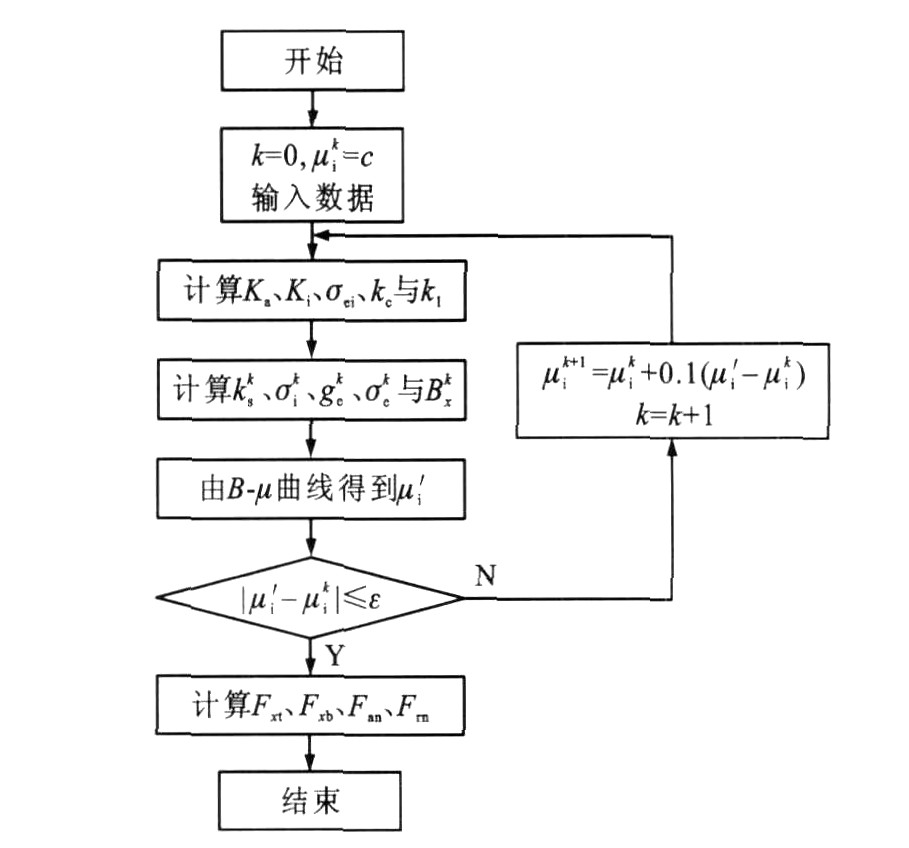Modeling and dynamics simulation of vehicle with linear induction motor
-
摘要: 为了研究采用直线感应电机(LIM)驱动的地铁车辆的动力学性能和直线感应电机的悬挂特性, 建立了直线感应电机的经典电磁力学模型和有限元模型、地铁车辆系统多体动力学模型。在直线感应电机的经典电磁力学模型中, 考虑了纵向边端效应、横向边端效应和气隙等因素的影响。采用数值方法求解电机的牵引力、法向力和点头力矩, 对比了经典模型和有限元模型的计算结果。仿真结果表明: 直线感应电机力学模型能反映直线感应电机力学特性, 满足地铁车辆动力学仿真要求; 直线感应电机地铁车辆动力学特性与电机气隙变化规律和悬挂方式密切相关, 不同的电机悬挂方式各有利弊; 合适的电机悬挂方式和气隙控制策略能提高车辆运行稳定性, 降低轮轨磨耗和改善车辆曲线通过性能。Abstract: In order to research the dynamics performance of linear-motor metro vehicle and the suspension characteristics of linear induction motor(LIM), the classical electromagnetic mechanics model and finite element model of LIM, and the multibody dynamics model of the vehicle were established.The longitudinal and lateral end effects and air gap were taken into account in the classical model.Numerical method was adopted to solve the traction force, normal force and pitch moment of LIM.The solution results by the classical model were compared and verified by using finite element method.Simulation result shows that the classical model describes the mechanic properties of LIM and meets the requirement of dynamics simulation for metro vehicle.The dynamic performance of LIM is closely related to the change of air gap and suspension types.Different suspension types have their own advantages and disadvantages.Proper suspension type and air-gap control strategy can increase the stability of metro vehicle, reduce the wheel-rail wear and improve the curving performance of vehicle system.
-
Key words:
- metro vehicle /
- LIM /
- electromagnetic field /
- dynamics simulation
-
表 1 LIM主要参数
Table 1. Primary parameters of LIM
参数 数值 参数 数值 初级电压/V 1 100 极距/mm 192 频率/Hz 45 初级宽度/mm 250 初级电流/A 300 每极每相槽数 2 额定推力/kN 16 每相串联匝数 180 同步速度/(m·s-1) 17 次级铝板厚度/mm 6 相数 3 次级铁轭厚度/mm 28 极数 6 额定气隙/mm 10 表 2 车辆主要参数
Table 2. Primary parameters of vehicle
参数 数值 车体质量/kg 30 000 侧架质量(每边)/kg 400 轮对质量(每个)/kg 1 100 电机质量(每个)/kg 760 电机垂向吊挂刚度/(MN·m-1) 30 -
[1] 林俊. 采用独立车轮的直线电机轨道车辆动力学性能研究[D]. 成都: 西南交通大学, 2006.LI N Jun. Research on the dynamics for LI M vehicle with independtant wheel[D]. Chengdu: Southwest Jiaotong University, 2006. (in Chinese) [2] WALLACE A K. The function of the reaction rail in the development of a LI Mpropulsion systemfor urban transit[J]. IEEE Transactions on Industry Applications, 1984, 20(4): 942-947. [3] 魏庆朝, 邓亚士, 冯雅薇. 电机悬挂方式对LI M地铁系统动力特性的影响研究[J]. 铁道工程学报, 2007(11): 59-64. https://www.cnki.com.cn/Article/CJFDTOTAL-TDGC200711012.htmWEI Qing-chao, DENG Ya-shi, FENG Ya-wei. Study of suspension mode influences on LI M metro system dynamic characters[J]. Journal of Railway Engineering Society, 2007(11): 59-64. (in Chinese) https://www.cnki.com.cn/Article/CJFDTOTAL-TDGC200711012.htm [4] 龙许友, 魏庆朝, 冯雅薇, 等. 轨道不平顺激励下直线电机车辆/轨道动力响应[J]. 交通运输工程学报, 2008, 8(2): 9-13. http://transport.chd.edu.cn/article/id/200802003LONG Xu-you, WEI Qing-chao, FENG Ya-wei, et al. Dynamic response of linear metro vehicle/track excited by track irregularity[J]. Journal of Traffic and Transportation Engineering, 2008, 8(2): 9-13. (in Chinese) http://transport.chd.edu.cn/article/id/200802003 [5] KI M D K, KWON BⅡ. Anovel equivalent circuit model of linear induction motor based on finite element analysis andits coupling with external circuits[J]. IEEE Transactions on Magnetics, 2006, 42(10): 3407-3409. doi: 10.1109/TMAG.2006.879078 [6] 姚保庆. 直线牵引电机的控制及电磁性能的研究[D]. 北京: 北京交通大学, 2007.YAO Bao-qing. Study on control and electromagnetic performance of linear traction motor[D]. Beijing: Beijing Jiaotong University, 2007. (in Chinese) [7] 郭焕. 直线感应电机的直接推力控制及仿真[D]. 长沙: 中南大学, 2007.GUO Huan. Direct thrust control andits si mulation of linear induction motor[D]. Changsha: Central South University, 2007. (in Chinese) [8] FAIZ J, JAFARI H. Accurate modeling of single-sided linear induction motor considers end effect and equivalent thickness[J]. IEEE Transactions on Magnetics, 2000, 36(5): 3785-3790. [9] MIRSALI M M, DOROUDI A, MOGHANI J S. Obtaining the operating characteristics of linearinduction motors: a new approach[J]. IEEE Transactions on Magnetics, 2002, 38(2): 1365-1370. [10] 柳拥军, 杨中平. 直线感应电机悬挂技术[J]. 都市快轨交通, 2006, 19(1): 49-51. https://www.cnki.com.cn/Article/CJFDTOTAL-DSKG200601016.htmLI U Yong-jun, YANG Zhong-ping. Suspension technique for linear induction motor[J]. Urban Rapid Rail Transit, 2006, 19(1): 49-51. (in Chinese) https://www.cnki.com.cn/Article/CJFDTOTAL-DSKG200601016.htm -





 下载:
下载:














